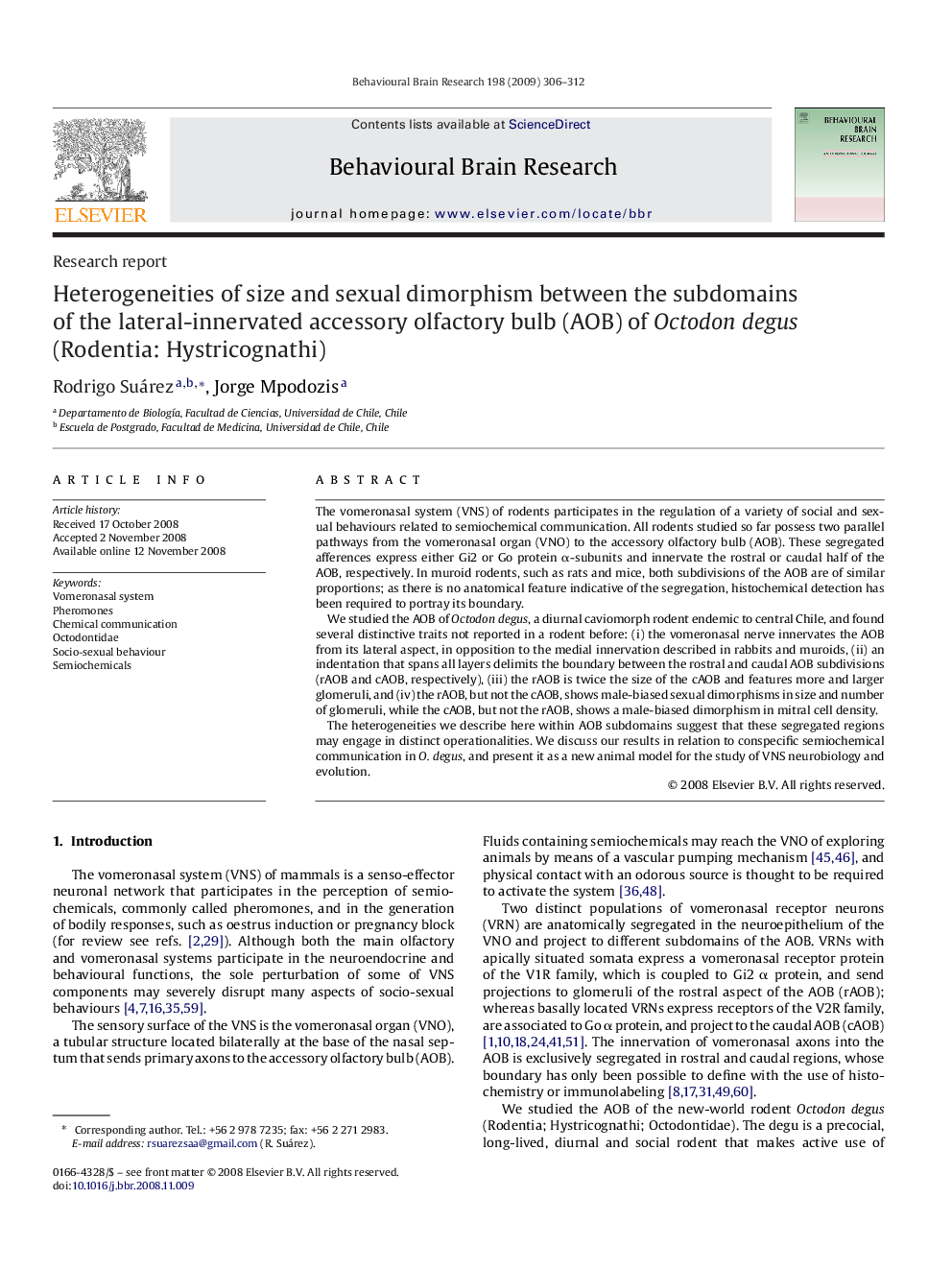| Article ID | Journal | Published Year | Pages | File Type |
|---|---|---|---|---|
| 4314941 | Behavioural Brain Research | 2009 | 7 Pages |
The vomeronasal system (VNS) of rodents participates in the regulation of a variety of social and sexual behaviours related to semiochemical communication. All rodents studied so far possess two parallel pathways from the vomeronasal organ (VNO) to the accessory olfactory bulb (AOB). These segregated afferences express either Gi2 or Go protein α-subunits and innervate the rostral or caudal half of the AOB, respectively. In muroid rodents, such as rats and mice, both subdivisions of the AOB are of similar proportions; as there is no anatomical feature indicative of the segregation, histochemical detection has been required to portray its boundary.We studied the AOB of Octodon degus, a diurnal caviomorph rodent endemic to central Chile, and found several distinctive traits not reported in a rodent before: (i) the vomeronasal nerve innervates the AOB from its lateral aspect, in opposition to the medial innervation described in rabbits and muroids, (ii) an indentation that spans all layers delimits the boundary between the rostral and caudal AOB subdivisions (rAOB and cAOB, respectively), (iii) the rAOB is twice the size of the cAOB and features more and larger glomeruli, and (iv) the rAOB, but not the cAOB, shows male-biased sexual dimorphisms in size and number of glomeruli, while the cAOB, but not the rAOB, shows a male-biased dimorphism in mitral cell density.The heterogeneities we describe here within AOB subdomains suggest that these segregated regions may engage in distinct operationalities. We discuss our results in relation to conspecific semiochemical communication in O. degus, and present it as a new animal model for the study of VNS neurobiology and evolution.
